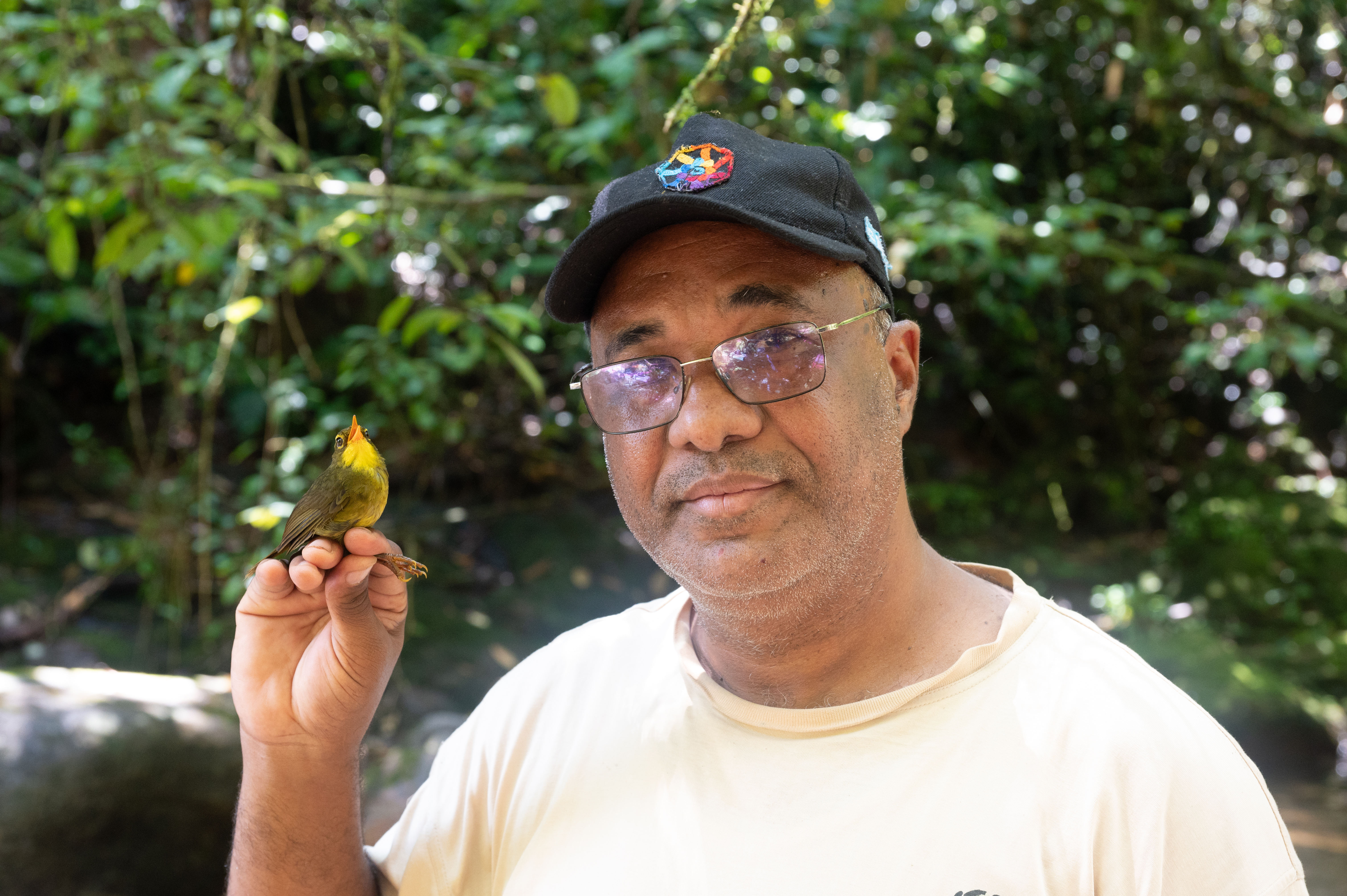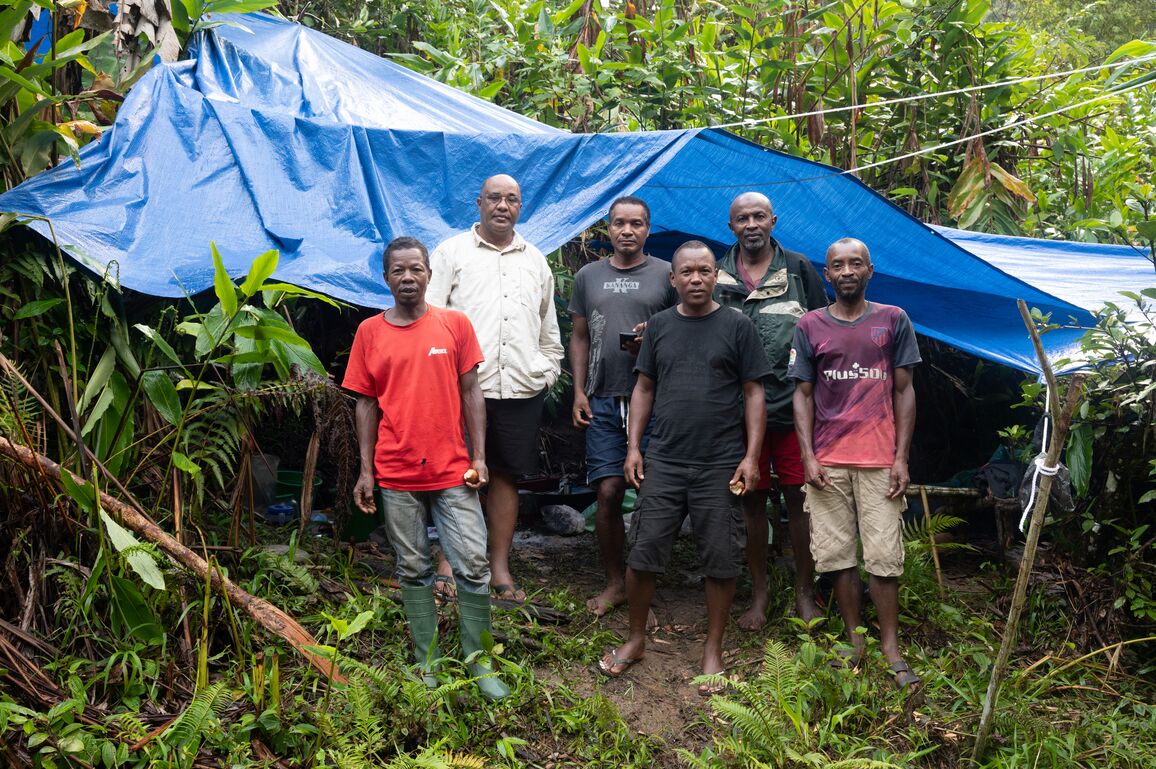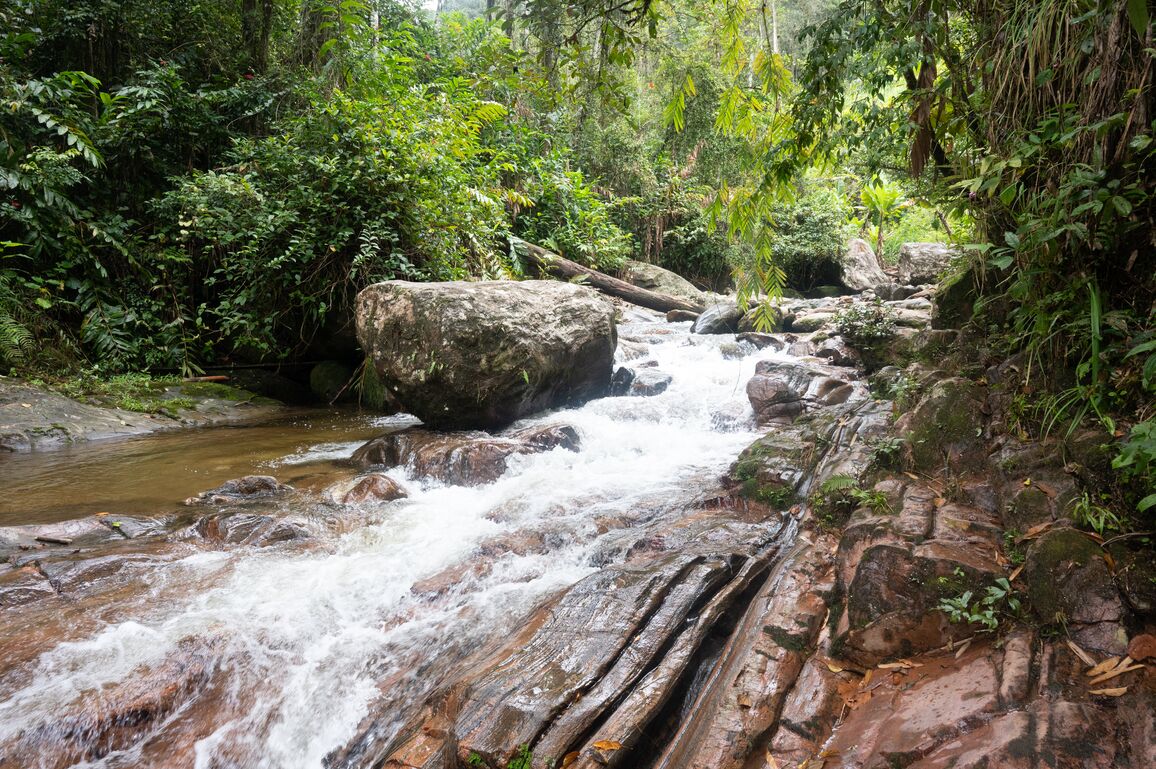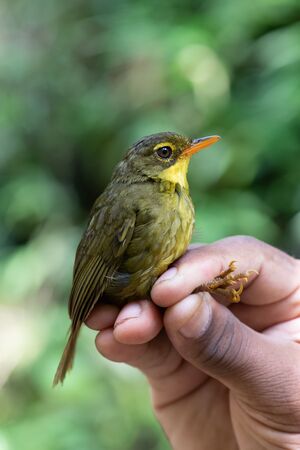Dusky Tetraka | Photo by John C. Mittermeier
The Dusky Tetraka, a small olive and yellow-throated bird that hops around on the ground and has eluded ornithologists for 24 years, was rediscovered by an expedition team searching the tropical forests of northeastern Madagascar. The expedition team, led by The Peregrine Fund’s Madagascar Program, found the species in two different remote sites: one on the Masoala peninsula in late December 2022 and another near Andapa in January this year. The last documented sighting of the Dusky Tetraka was in 1999, making it one of the top 10 most wanted lost birds by the Search for Lost Birds, a collaboration between Re:wild, American Bird Conservancy and BirdLife International.
“Now that we’ve found the Dusky Tetraka and better understand the habitat it lives in, we can look for it in other parts of Madagascar, and learn important information about its ecology and biology,” said Lily-Arison Rene de Roland, Madagascar Program director for The Peregrine Fund, and expedition leader. “There is a lot of biodiversity still to discover in Madagascar.”
Rene de Roland—who also rediscovered the Madagascar Pochard in 2006 in a remote area of northwestern Madagascar and was a student working with The Peregrine Fund when the Madagascar Serpent-eagle and Red Owl were rediscovered—spent several months searching for the Dusky Tetraka in Madagascar, the only place where it is found. He and his team set out in late December 2022 to search for the tetraka, a warbler-like bird that is part of a family found only in Madagascar, near Andapa. The team had to drive for more than 40 hours and hike for half a day up steep mountains to the last spot the bird had been seen. No ornithologists had returned to the site since 1999.
When the team arrived at the spot, they found that much of the forest had been destroyed and converted to farms for vanilla even though the area is officially protected as part of the COMATSA-sud protected area. After five days of searching they decided to move to lower elevations, since they had not seen any sign of the bird and realized that the Dusky Tetraka might not live at higher elevations.
While Rene de Roland and his team were searching for the tetraka near Andapa, another team from The Peregrine Fund’s Madagascar Program, led by Armand Benjara and Yverlin Pruvot, found the bird on the Masoala peninsula where they caught and released a single Dusky Tetraka in a mist net on Dec. 22. Benjara had been hoping to find the tetraka since he started working as a biologist for The Peregrine Fund.
“Seeing the bird for the first time was truly a surprise,” said Benjara. “Our entire team was extremely happy and excited.”
On Jan. 1, eight days into the expedition, Rene de Roland’s team got their first glimpse of a Dusky Tetraka. While next to a rocky river, John C. Mittermeier, director of the lost birds program at American Bird Conservancy, finally saw a bird that matched the description of the Dusky Tetraka hopping around in dense undergrowth near the river and snapped a photo of it. After consulting with the rest of the team, they agreed it was the Dusky Tetraka and quickly moved the search to that area.
“If Dusky Tetrakas always prefer areas close to rivers, this might help to explain why the species has been overlooked for so long,” said Mittermeier. “Birding in tropical forests is all about listening for bird calls and so you naturally tend to avoid spending time next to rushing rivers where you can’t hear anything.”
On the last day of the expedition, Jan. 2, the team was able to capture one Dusky Tetraka using a mist net and observe and measure it more closely before releasing it unharmed. The two Dusky Tetrakas they found spent the majority of their time in dense vegetation close to the river, presumably looking for insects and other prey in the damp undergrowth.
The Dusky Tetraka has a history of mistaken identity largely because it closely resembles another, much more common species, the Spectacled Tetraka. With so few confirmed observations for the Dusky Tetraka, it has been difficult for ornithologists to compile the species’ identifying characteristics. Ahead of the trip, the expedition team reviewed all the historical records of the bird dating back nearly a century to be sure they could positively identify the Dusky Tetraka if they found it.
Rene de Roland says the next steps for The Peregrine Fund’s Madagascar team will be to look for the Dusky Tetraka again between September and October, when most birds in Madagascar breed. They hope to visit additional sites that match the habitat and elevation where they saw the species in December and January to understand its distribution and conservation status. With the vast majority of the lowland rainforest in northeastern Madagascar already destroyed, it is likely that the Dusky Tetraka is threatened.
The Search for Lost Birds looks for species that have not had a documented sighting in at least 10 years. It developed a list of the top 10 most wanted lost birds when it launched in 2021. The Santa Marta Sabrewing, another of the top 10 lost birds, was rediscovered in Colombia in July 2022 by Yurgen Vega, a biologist working with SELVA, ProCat Colombia and World Parrot Trust in the Sierra Nevada de Santa Marta. The eight birds that have yet to be rediscovered are the Siau Scops-owl in Indonesia, South Island Kōkakō in New Zealand, Himalayan Quail in India, Itombwe Nightjar in Democratic Republic of Congo, Cuban Kite in Cuba, Negros Fruit-dove in the Philippines, Vilcabamba Brush-finch in Peru and Jerdon’s Courser in India.












